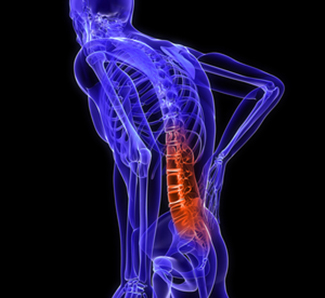Piriformis Syndrome
Piriformis syndrome: a muscle irritates sciatic nerve; causes pain deep in buttocks and often down the leg.

The piriformis is a muscle in the buttocks that stabilizies the sacroiliac joint. Piriformis syndrome is a neuromuscular disorder in which the piriformis irritates the sciatic nerve, causing pain in the buttocks. The piriformis overlaps the sciatic nerve, so pain often goes all the way down the leg, which can cause piriformis syndrome to be mistaken for sciatica. With piriformis syndrome, patients usually report pain deep in the buttocks. This pain is made worse by climbing stairs, performing squats, or sitting.
There are several possible causes of piriformis syndrome, including trauma, overload, and if the piriformis strains and overstresses the sciatic nerve. Sports and exercise like racing and cycling that use forward movements and posture can lead to piriformis syndrome, but so can sitting for long periods of time.
Symptoms and Diagnosis:
When the piriformis muscle tightens, it causes extra tension between the tendon and hip bone, causing discomfort or pain for the patient in the area of the hip bone. Pain, numbness and tingling in the buttocks may also be felt by the patient, worsening when he or she is sitting, running or stretching. Sciatic neuralgia, or pain spreading from the buttocks down the leg, may also occur due to the piriformis muscle putting stress on the sciatic nerve.
Diagnosis of piriformis syndrome is not easy because many of the symptoms of piriformis syndrome are also associated with other disorders. The physician will go over the patient's medical history, following with a physical exam. During the exam, the physician may reproduce sciatic muscle pain with the help of external rotation of the piriformis muscles in a procedure called the Pace Test. The physician may also use the Freiberg Test, which reproduces the pain with the help of forced internal rotation of the extended thigh. An X-ray, MRI, or Magnetic Resonance Neurography can help to confirm the diagnosis.
Treatment:
Treatment for piriformis syndrome starts with relaxing the piriformis muscle as much as possible. All the activities that cause or aggravate this disorder should be avoided. Other non-medical treatments include exercise, change in posture, and massage. Ice over the affected area for fifteen to twenty minutes at a time will be helpful in relieving pain. This should be done several times a day. Stretching of the hip muscles is not advised until the acute pain is gone.
The physician may prescribe anti-inflammatory drugs or natural treatments like proteolytic enzymes, such as bromelain. These enzymes are both natural and extremely beneficial with no side effects.
Risks and benefits
Failure to take preventive measures for any spinal condition may result in a further aggravated condition. Surgical measures for advanced cases may give relief from extremity pain. The risks involved with surgery are common - infection, blood loss, non-union, damage to nerves and spine - and some specific to your treatment. This material is intended to give the patient an overview of surgical procedures and treatments and is not intended to replace the advice and guidance of a physician. Always consult with your doctor about the particular risks and benefits of your treatment.
